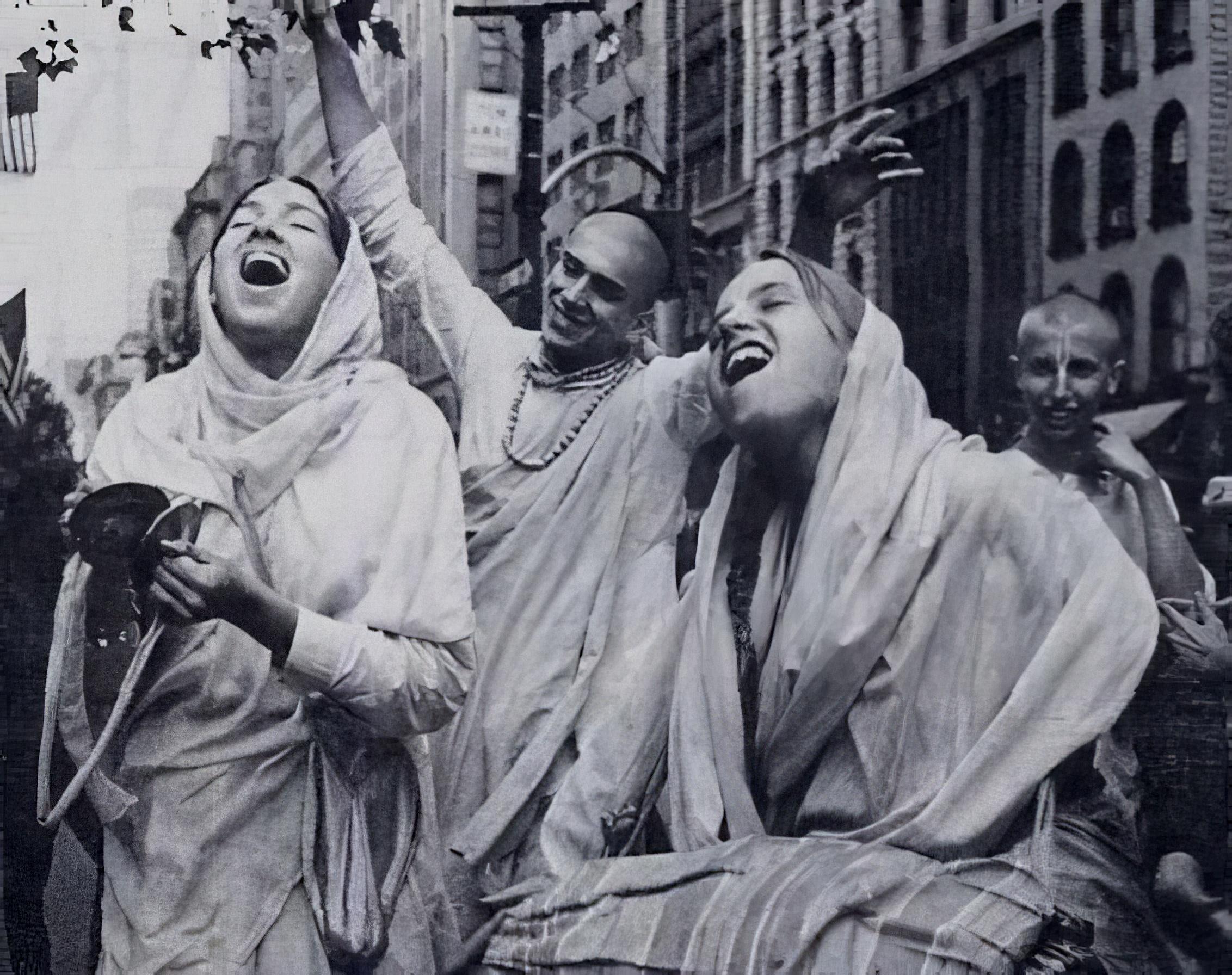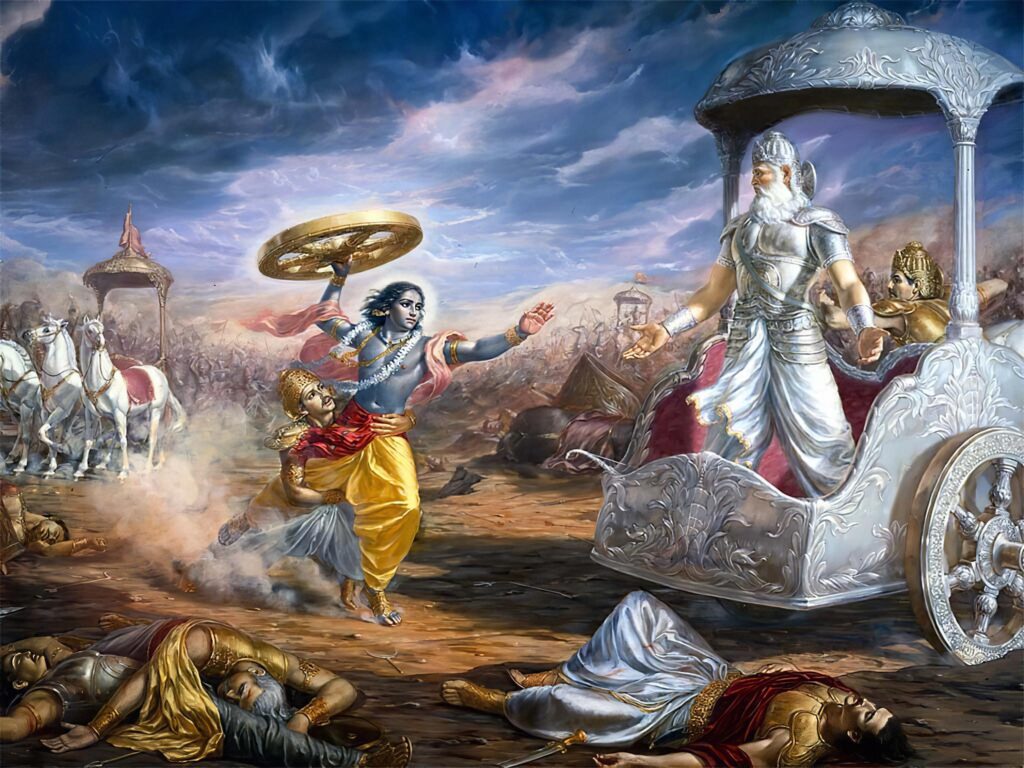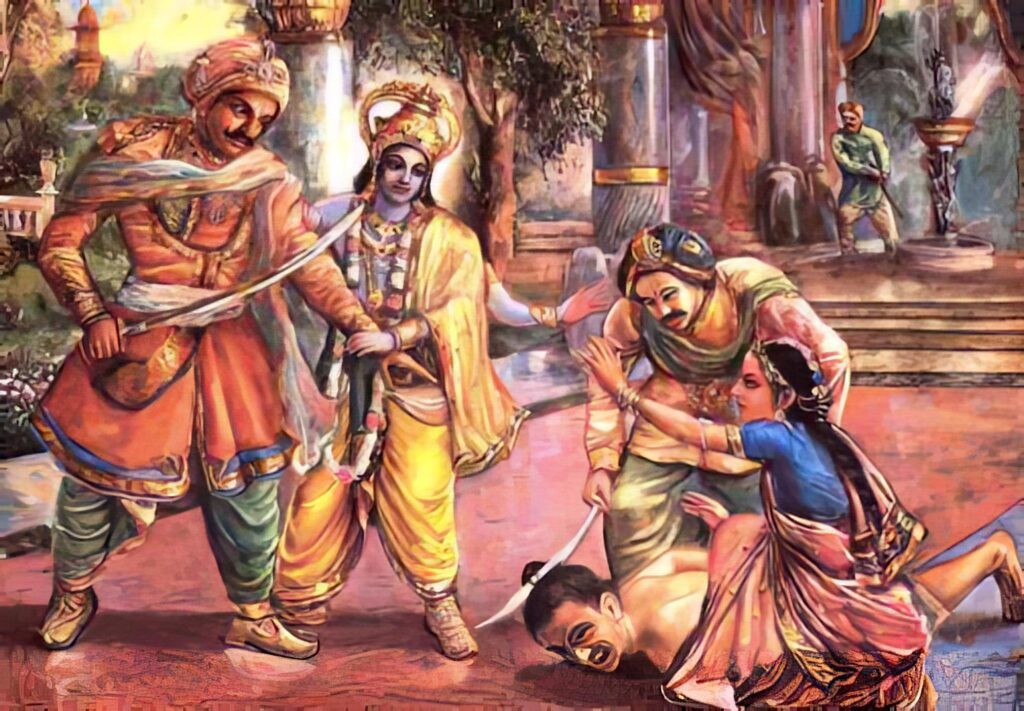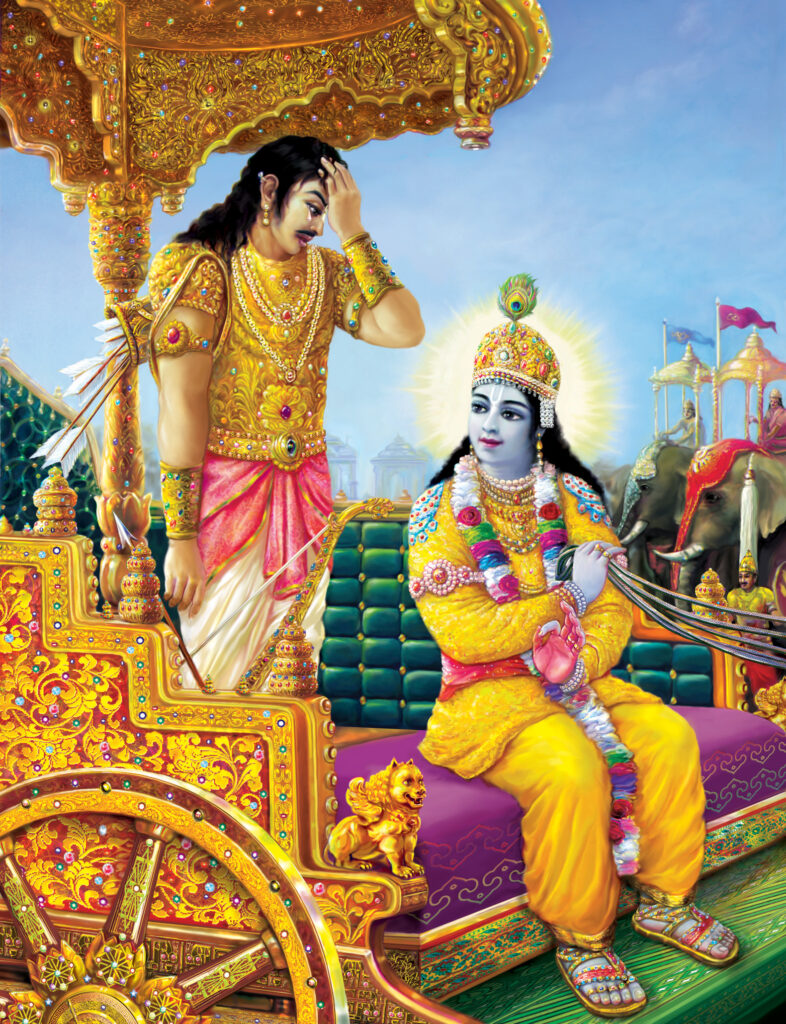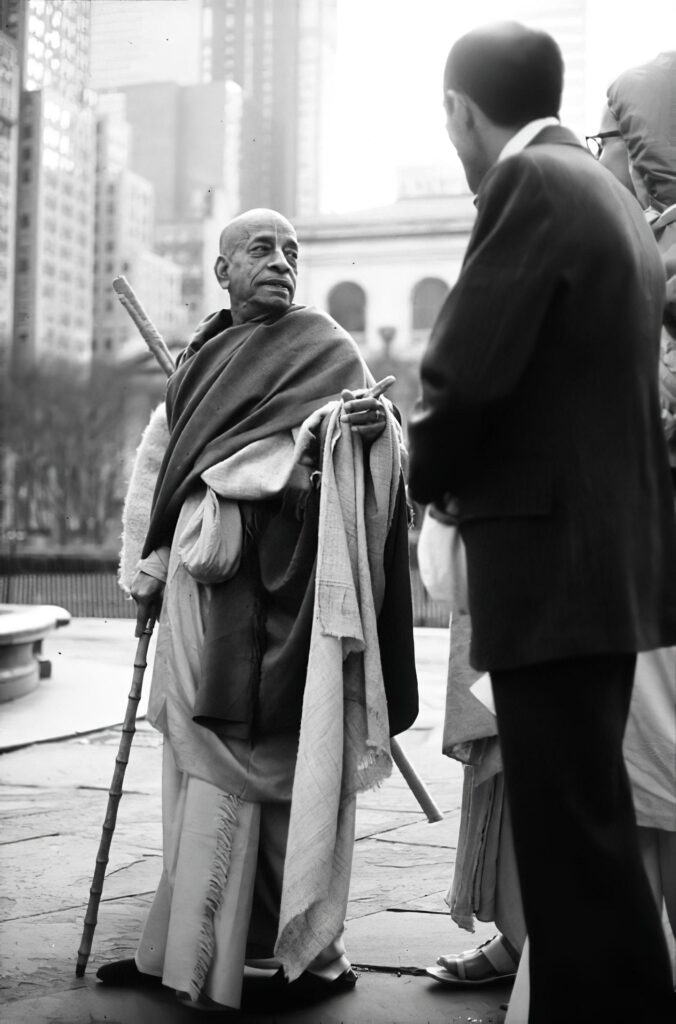The fall of Jaya and Vijaya after being cursed by the four Kumaras is a very significant event in the Srimad Bhagavatam. Great part of the narration covers topics directly or indirectly connected with this event, like the pregnancy of Diti in the evening, the fight of Lord Varaha against Hiranyaksa, the pastimes of Prahlada Maharaja and Lord Nrshinhadeva, the advent of Lord Rama and so on. This is also possibly one of the most difficult-to-understand passages of the Srimad Bhagavatam.
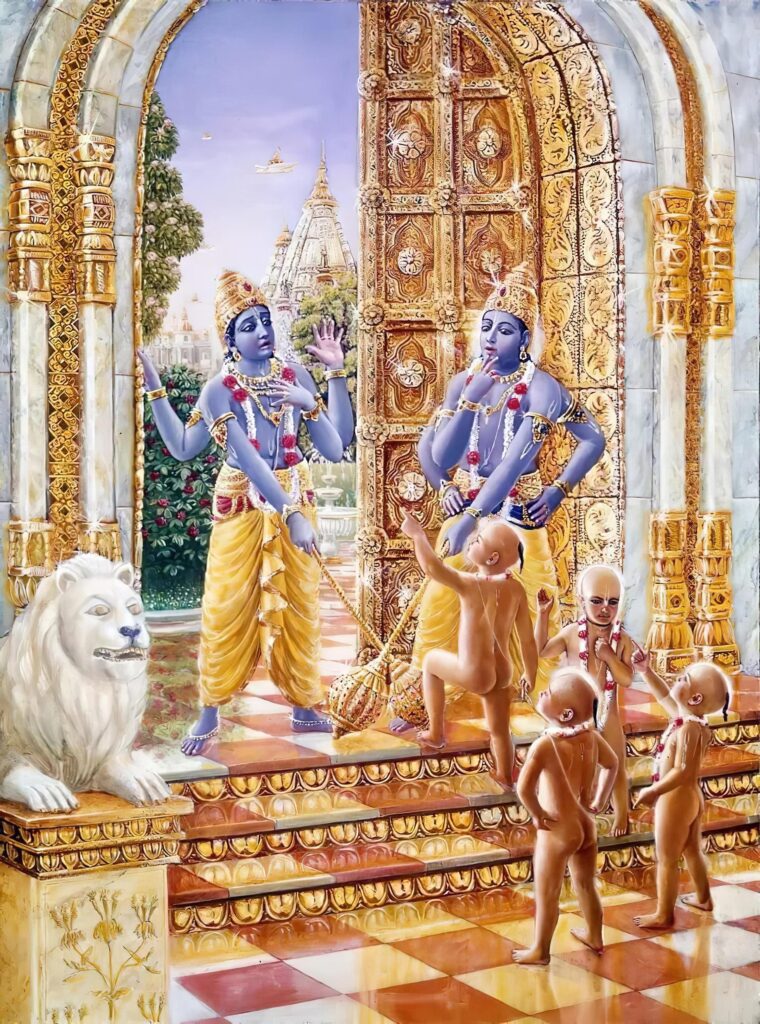
The saga starts with the visit of the four Kumaras to Vaikunta. The chronology is that the meeting of Jaya and Vijaya with the four Kumaras happened at the end of the 5th Manvantara, and their first birth happened during the 6th Manvantara when the conditions for their birth (Diti violating the regulative principles and begetting children at the prohibited time) appeared.
This was in turn after the pastimes connected with the sons of Daksa being delivered by Narada Muni. After cursing Narada Muni, Daksa engaged in begetting daughters (whom he knew Narada would not try to liberate) and fulfilled his work of populating the universe through them. Diti was one of these daughters, and she became the mother of Hiranyaksa and Hiranyakashipu.
The second birth of Jaya and Vijaya (as Ravana and Kumbakarna) happened earlier in the current Manvantara (the 7th), while their third birth as Sisupala and Dantavakra happened recently when Krsna was present on our planet.
Continue reading


